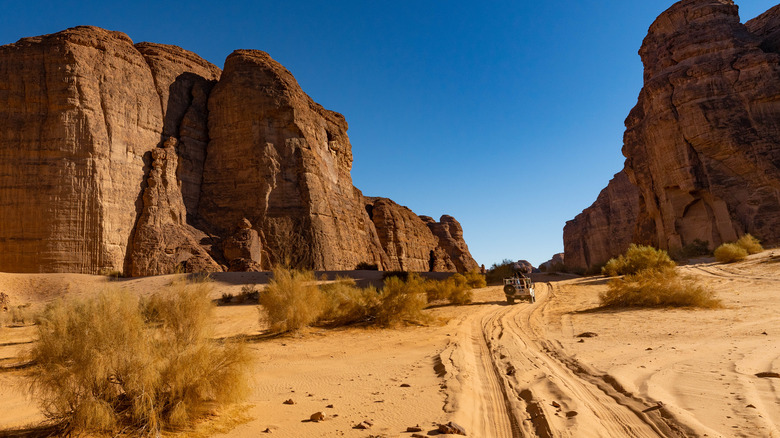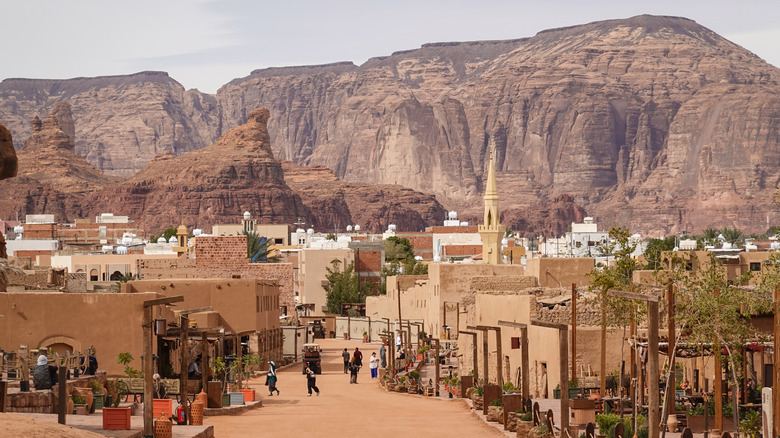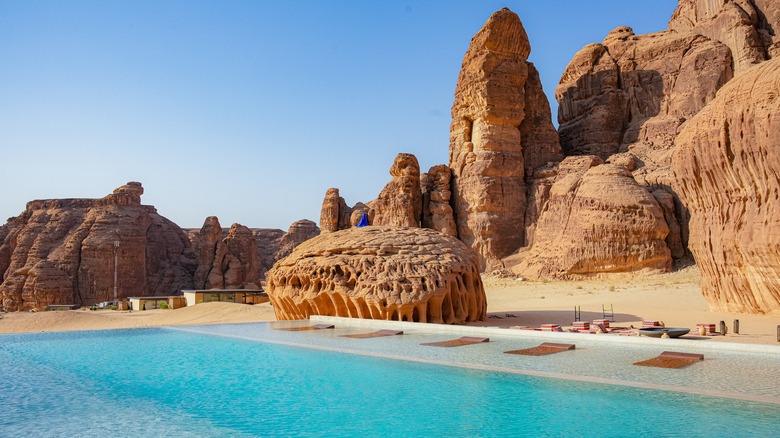Hidden In The Desert Of Saudi Arabia Is A Nature Reserve With Surreal Landscapes
Thousands of years ago, Al-'Ulā (commonly spelled Al-Ula and AlUla today) was an important walled city in the desert of Saudi Arabia. It was set along the incense trade route that connected Asia and Europe. Over centuries, Al-Ula was ruled and shaped by the Dedanites, Nabataeans, Romans, and Ottomans. Today, this coveted fertile oasis has been transformed into an extraordinary tourist destination that delights history buffs, adventurers, and luxury lovers alike.
Al-Ula is home to Saudi Arabia's first UNESCO World Heritage Site, Hegra, an impressive architectural complex of ancient tombs and monuments that has been compared to Petra in Jordan. To the north of Al-Ula's ancient Old Town is a 580-acre expanse protected as the Sharaan Nature Reserve, where you can embark on a safari to see unique flora and fauna in truly unspoiled wilderness. With impressive historic sites, natural landscapes, and a clutch of chic luxury retreats, Al-Ula is poised as the Middle East's next great vacation spot.
You can travel to Al-Ula by flying to the Al-Ula airport (ULH) from Dammam, Jeddah, and Riyadh. The best time to visit is during the cooler months of October and April. During the summer, temperatures average above 94 degrees Fahrenheit.
What to do in Al-Ula
To explore the unique Sharaan Nature Reserve, embark on a three-hour safari tour. As you cruise through the desert ecosystem dotted with acacia trees, you'll pass by enormous rock formations, grassy valleys, and sand dunes. On the way, you'll look for Nubian ibex. The rare Arabian leopard, which is critically endangered, will be reintroduced into the reserve in the future.
In addition to the safari, you can discover the ancient Nabataean city of Hegra, Saudi Arabia's UNESCO World Heritage Site renowned for its rock-cut architecture, on a three-hour day tour or 90-minute night tour. Don't miss a visit to Al-Ula Old Town, a labyrinth of ancient buildings and squares that date back to the 12th century and is presided over by the Al-Ula Fort. The Old Town was abandoned in the 1980s but has been revitalized as a plein-air museum. The Old Town Market Street is now lined with shops that sell local artisanal wares and serve local cuisine at lively cafés. Another iconic site is Elephant Rock, an enormous massif that hulks over 170 feet tall. Grab a meal at SALT, a food truck that sits in the shadow of Elephant Rock and a particularly stunning spot at sunset when it appears to glow.
Where to stay in Al-Ula
The Middle East is known for its unbelievably lavish beach resorts in Dubai, and Al-Ula promises similar luxury. Banyan Tree AlUla boasts tented villas that blend into the desert landscape. With private pools, fire pits, and expansive vistas, these accommodations are true desert oases. The resort also has two restaurants and a spa to round out the pampered experience. "Banyan Tree AlUla is truly one of the most incredible places I've ever been to!" raved a Tripadvisor reviewer. "The level of luxurious service I received was unmatched. Every staff member is genuine and goes above and beyond to make you feel special. The location is stunning, with breathtaking views, and every detail of the resort is magical."
Our Habitas is a sleek, desert fantasy of tented villas decorated with neutral tones and spacious outdoor terraces. The resort's pièce de résistance, however, is its massive infinity-edge pool, which should be on the list of the world's most luxurious pools. Its sparkling blue water seems to soar into the desert canyon beyond. With a weekly schedule of programming, guests have a wide range of adventures to choose from, including art tours, fitness classes, and stargazing. For an even more immersive experience, try glamping at Caravan at AlUla, where Airstream trailers have been converted into stylish hotel rooms. If you're ready to move on from the desert but want more Arabian nights, consider crossing the Red Sea for a whole new world experience at one of Egypt's beachfront resorts.


